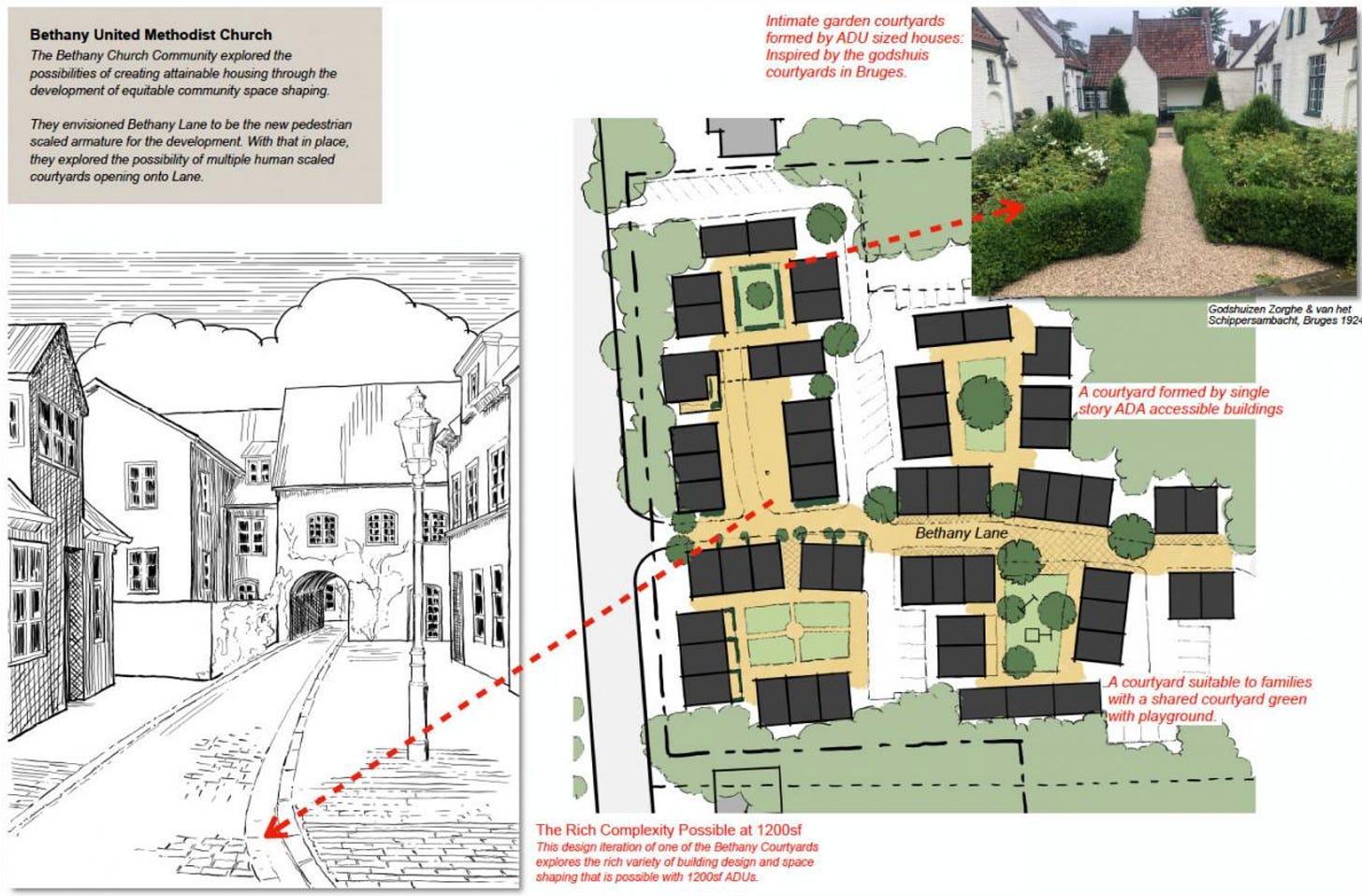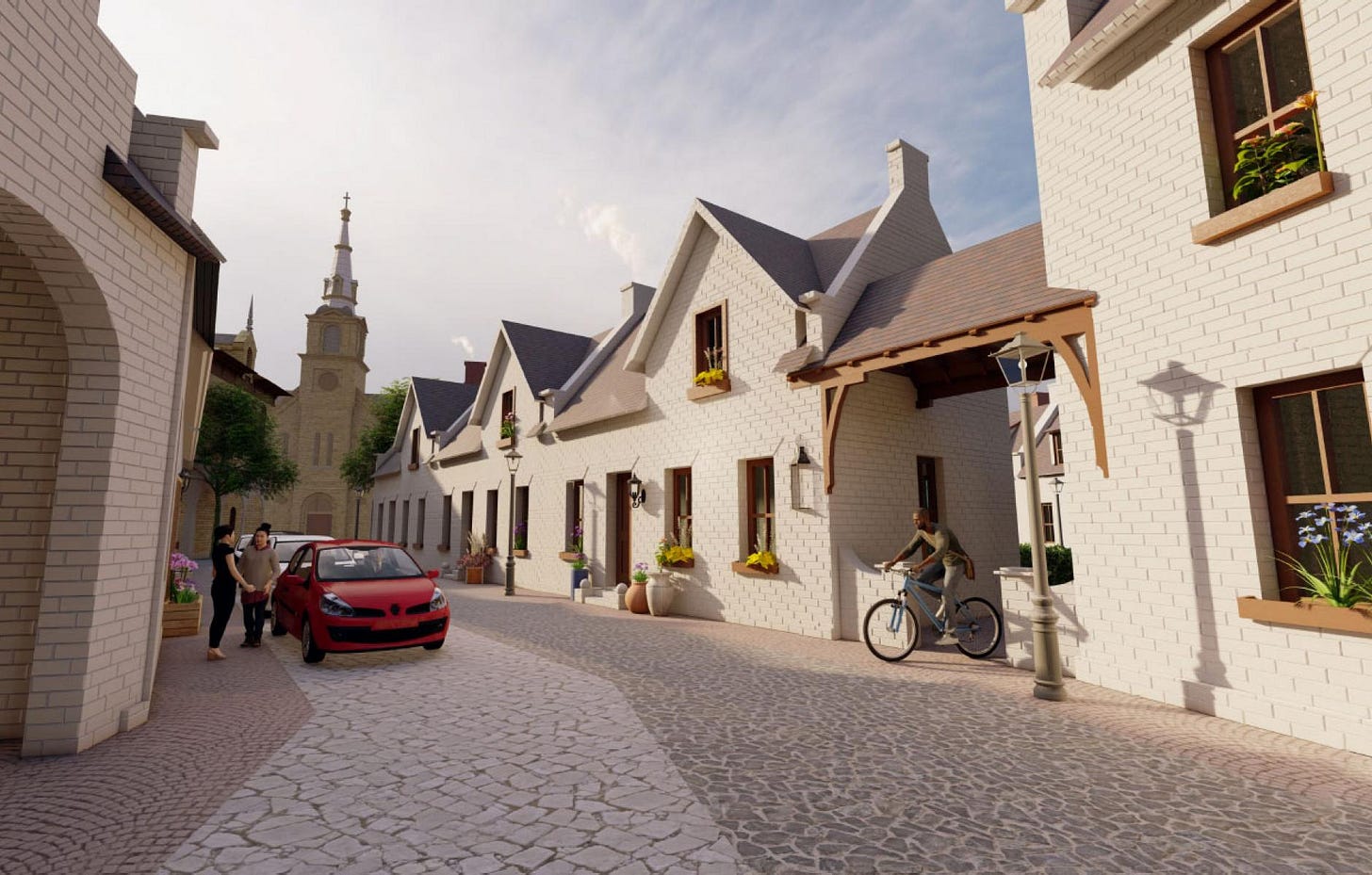The Faith-Based Housing Initiative
Why Southern Urbanism started this campaign, and why we are bullish it will work
A couple of years ago in Durham, NC, I participated in a design charrette exploring the potential of faith-based housing as a response to the multiple crises facing American cities.
Everyone knows about the housing crisis—it’s well documented in political and media circles—but less often acknowledged is the crisis of purpose, which many equate with a crisis of faith. Congregations are shrinking in both numbers and commitments, and with it, we are seeing a decline in charity and civic participation. These twin crises are feeding what can best be described as a crisis of loneliness. Never have Americans been so disconnected, so isolated, and for many, so profoundly sad.
That’s why we created the Faith-Based Housing Initiative, a program designed to train twenty congregations to develop their excess land into intentional housing communities. While solving the crises mentioned above is ambitious, to say the least, there are few opportunities to address all of them together. We believe the FBHI offers that opportunity.

Congregations, especially in the South, have no shortage of land. In Durham County alone—one of the smallest in North Carolina—there are more than 500 faith-based parcels, totaling 2.25 square miles. Across the state, there are more than 1,500 Methodist churches, and even more Baptist congregations. You get the idea.
The scale of underutilized land is enormous and practically limitless.
This land represents an opportunity to foster true community. Not just housing, but homes with meaning—places where residents’ values are reflected in the built environment. In this model, residents can support the congregation, while the congregation supports the residents. That reciprocity is the essence of how cities have always been built, and a model modern development has strayed mainly from.
THE PROS + CONS
Congregations are uniquely positioned to meet these crises. Unlike market-driven developers, they carry a mission beyond profit, which allows them to pursue lower-cost housing. Most faith institutions own their land outright, free and clear of debt. If developed under a non-profit model, they can also deliver housing exempt from property taxes. Together, those benefits alone can reduce costs by 30 to 50 percent compared to the market. No other type of development starts on a more stable financial footing.
But churches are also uniquely challenged when it comes to building housing. For the most part, they are not developers, and they don’t know how to navigate the process. The consensus-based decision-making structures common to many congregations often prove toxic in development, where thousands of decisions need to be made quickly under pressure. Someone has to be at the helm; roundtable governance cannot substitute for leadership.
Churches are also naturally risk-averse. They are sensitive to financial exposure, wary of social critique from members and neighbors, and challenged to find lenders, since banks hesitate to finance church development. The broader ecosystem of church lending is nearly nonexistent. These are all solvable problems—but they have to be solved with intention.
PROGRAMMING
Our program is designed to solve these issues. It is a six-month intensive training for twenty congregations across the country. It includes world-class site planning under the direction of architect Thomas Dougherty, world-class development training with Alli Quinlan, executive director of the Incremental Development Alliance, and community capacity-building events, such as a speaker series and film series with Chris Elisara’s Better Cities Film Festival.
By the end of the program, each congregation will walk away with a full suite of deliverables: thoughtful research, beautiful site plans, solid business plans, and the readiness to put shovels in the ground.

RESURRECTING HOUSING MODELS
What gives me confidence is that this is not a new model. It is, in fact, an old one—just one that has been dormant for several generations. Faith-based housing is subject to what Jane Jacobs once called “mass amnesia,” meaning there is virtually no one left alive today who knows how to do it.
But historically, for most of human existence, faith congregations have been providers for people on the margins: orphans, the elderly, the infirm, the mentally ill, the homeless, and refugees. Churches carried that responsibility for millennia, long before government bureaucracies crowded them out. The capacity of faith institutions to serve is still there, and in many ways, more reliable than our strained local, state, and federal governments.
Development is about more than delivering the most product for the least cost.
Congregations are uniquely positioned to break the mold. The truth is, homes must be more than housing. People on the margins deserve dignity. They deserve inspiring places to live, not just roofs over their heads. Faith institutions are uniquely positioned to offer both.
We stand at the cusp of something big, and through this initiative, we intend to re-prove the already proven model.
Learn more at faith-housing.org and fbhi.substack.com
Aaron Lubeck is the founder of Southern Urbanism. He is a designer and builder in Durham, North Carolina.

